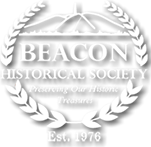"The Man Who Dared Too Much"
Harry McLaughlin: aviator stuntman and short-lived silent movie star.
Harry "Tex" McLaughlin had a meteoric rise, and fall, to fame. And it all happened to him in the year 1920.
Tex McLaughlin actually had very little of Texas background in him. Born In !892 in Fishkill Landing (now Beacon), New York, where his father George McLaughlin was a brakeman for the New England Railroad, Harry spent most of his young years in Connecticut. He got the nickname Tex from the relatively brief time he spent as a flight instructor during World War I at the army's Kelly Field in San Antonio, Texas. Prior to the war Harry had been a gymnast and an instructor at the Y.M.C.A. in Connecticut. Such was the extent of his physical fitness and athletic abilities that he was named one of the "most perfect of male specimens" in America in a competition held at Madison Square Garden in 1915. But it was after the Great War when Harry took on the greatest role of his life.
It was the spring and summer of 1920, and Harry McLaughlin's star was on the rise. Somehow in San Antonio Harry had met and impressed Tex O'Reilly, adventurer. soldier of fortune, and writer of western novels. O'Reilly was having two of his novels, "Hollywood Ranch" and "West of the Rio Grande," made into silent movies in the San Antonio area. Harry was chosen to play the lead opposite the soon to be famous leading lady, Allene Ray, in both productions being made that summer of 1920. Harry would do all of his own stunts in the two films, stunts the likes of which (for daring) had never been seen.
With filming over, Harry was his own best agent as America's most daring stuntman. He made the national news in August by having his photo taken while doing a handstand on a chair on top of a Chicago skyscraper. When Ormer Locklear, America's foremost aviator stuntman was killed in a movie shoot that year, Harry, with his flight background and superb gymnastic abilities, immediately stood in to fulfill Locklear's contracts to perform at state fairs. He soon had the reputation as America's wildest air daredevil. His airplane act was to hang by his knees from a rope ladder and then jump to the wing of another nearby plane all the while being 1000 feet above the ground. His sheer recklessness performing this stunt even amazed his fellow pilots. "Quick as a panther, agile as a leopard, and the most daring fellow I ever saw," was the assessment of Shirley Short, the pilot who would take part in the stunt that took Harry's life.
The date was September 18, 1920, the place was the New York State Fair in Syracuse. Harry "Tex" McLaughlin was earning the vast sum of $1000 a stunt to awe the crowd of 40,000 spectators below. Two planes were in the air, one above the other. Harry climbed out on the wing of the plane below and reached for the rope ladder attached to the fuselage of the plane above. He began to climb the ladder when a sudden burst of wind blew Harry into the propeller of the lower plane. Harry's back was sliced badly by the propeller and pilot Shirley Short, recognizing the danger, headed the nose of the plane to the ground. His effort was called the "Greatest exhibition of flying ever seen" as Short "pancaked" down like a floating leaf and landed softly dragging Harry, still clinging to the rope, only about 25 feet. Harry was rushed to a Syracuse hospital where he died two days later with his mother (who had witnessed the accident) at his side.
"Honeymoon Ranch" opened that December to good reviews and high praise for Harry McLaughlin's stunts in the movie. Even more plaudits for Harry in his "West of the Rio Grande" which opened in 1921. For the boy born in Beacon, high stakes risk taking and daring the Devil meant more to him than life.





